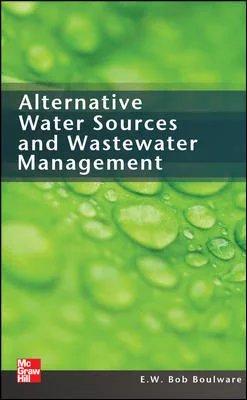Lateral Repairs And Clean Water

And those are all certainly great products plumbers should consider marketing to address growing concerns about the quality of drinking water.
However, repairing lateral lines might add up to an even bigger matter, not to mention a market that the plumbing community can more readily command as municipalities look to eliminate excess water throughout the entire system.
Typically, such lines are considered private property, and, therefore, up to the homeowner's discretion to repair. However, the end result of decayed private pipe adds up to an enormous public problem. Some municipalities are beginning to mandate such repairs, forcing homeowners to pay for cracked laterals before they can close on the sale of their homes. And on the other hand, Sarasota, Fla., last year began a pilot program to pay for these repairs with tax dollars.
"Who assumes responsibility for repairing damaged laterals is still a matter of debate," says Gil R. Carroll, director of business development, Maxliner, based in Morrisville, N.C. "But there is a simple solution to the problem that contractors need to know about."
The buzzword to remember is "inflow and infiltration," or "I/I." The average person uses over 120 gallons of water per day doing basic tasks like using toilets, washing laundry, washing dishes and showering.
Municipal sewer systems are built to carry this flow to local treatment plants. But these pipes age. They naturally decay, form cracks, voids and gaps, which allow excess rainwater to infiltrate the system. Roots from trees are drawn to this water and serve to contribute to the gaps in the pipe.
As a result, the amount of water entering treatment plants is now at a higher level, particularly during and after heavy rainfall or snowmelt. Even the largest city treatment facilities are not equipped to handle this extra capacity.
To combat this, municipalities have spent the past decade conducting significant repairs to their mainline sewer pipes and manholes to reduce the amount of I/I overflows, sewer backups and stoppages.
However, there remains plenty more work to be done by homeowners. Most homeowners are unaware of this situation until the sewer floods into the house. Many have their pipes cleaned thinking they have fixed the problem and,the next year, it happens again.
"Municipalities have only had control over mainlines and the lateral right of way -- generally from the curb or sidewalk to the main," Carroll says. "As the mainlines are repaired to eliminate cracks contributing to I/I, the excess water now runs even higher as the underground water table rises, now penetrating the aging lateral lines."
As a result, lateral lines are now assuming a much greater role in correcting I/I problems.
With no obvious signs of trouble, few homeowners even know they have a problem with their lateral lines and even less may realize that these aging lines are their responsibility.
"As homeowners and municipalities are forced to comply with regulatory demands and repair aging laterals, the plumbing industry will no doubt be faced with enormous opportunities," Carroll explains. "They will be looking for a solution that is affordable, fast and can preserve area grounds and landscaping."
Traditionally, this type of repair may well be the most extensive type of repair a homeowner would face. Typically, it meant ripping up the front lawn and sidewalk to not only get to the old pipe, but install a new pipe, too.

As with anything else, there are a few different ways of doing this process. Boring, lining, spot repair, cure-in-place and air inversion are some of the methods we learned about at the Pumper & Cleaner Environmental Expo International, Feb. 19-22, in Nashville.
Regardless of brands, contractors can essentially create "a pipe within a pipe" that will restore function and flow without digging.
Depending on the particular method, there are a couple different types of piping available, such as HDPE, a polyethylene material, plastic and resin, a cure-in-place epoxy resin impregnated into a felt lining. This lining is inserted into the old pipe and left to cure to a new, impermeable pipe.
All of these types of piping are seamless and durable as opposed to cast iron and clay. A 90-degree angle can also be seamless. The only digging involved is an access hole and sometimes an exit hole. These are relatively small holes in which the pipe is inserted or pulled through. The ground above is untouched and sewer service can resume usually the same day.
While we visited other companies during our visit, Maxliner's booth featured a full-scale demo of their system. To give you a better idea of how this process works, Maxliner uses flexible liners and a variety of epoxy resins to fit particular jobs. Plumbers also can choose from a wide selection of liners to reline pipes with 22-, 45- or even 90-degree bends.
"A liner as thin as 5 mm, even at a void, has the integrity of a Schedule 35 plastic sewer pipe," Carroll adds. Varying thicknesses are available so a plumber could even select a liner equal to a Schedule 80 plastic pipe. Liners are available in 3-10 inch diameters and liners can be inverted and impregnated with a styrene-free epoxy resin right at the jobsite.
"Epoxy resin is best known for its strength, durability and ability to perform in submerged and adverse conditions," Carroll explains.
Once the liner is impregnated, the contractor inverts the tube and injects air throughout, forcing the tube to extend the length of the old pipe. A calibration hose is then inverted inside the liner to allow for curing.
At this point, the contractor can choose to cure the pipe ambiently by holding air pressure and allowing the resin to harden on its own, or introduce heat into the existing pipe by re-circulating hot water.
Ultimately, the cured resin affixes the new liner to the old pipe.
"In essence this pipe within a pipe is brand-new and will last for at least as long as its 50-year minimum design life," Carroll says.
According to Carroll, his company's own field and laboratory tests determined that tree roots cannot penetrate or attack epoxy resin, ensuring root-free performance for the life of the pipe, and hence, eliminating I/I.
Pipe Bursting
Lining damaged lateral lines was just one part of trenchless technology we saw on display at the Pumper Cleaner Show, last February in Nashville, Tenn. Another way to repair lateral lines is to break apart the existing pipe while feeding entirely new plastic pipe.For example, TRIC Trenchless uses a hydraulic ramming system to pull a polyethylene pipe through the existing pipe. As the system is pulled through, a bursting head breaks the old pipe and pushes it away as the new pipe is drawn through. Typically, contractors dig small entry and exit holes at the beginning and end of the damaged lateral line.
A steel cable is then pulled through the existing pipe and a splitting wedge is attached to the steel cable at the entry hole. The bursting head has a special blade that helps break apart the old pipe. In addition, the new pipe is fused to the bursting head.
The hydraulic puller is attached to the exit hole and the power supply pulls the new pipe through. TRIC's hydraulic puller can produce a pulling force of 60,000 pounds. The new pipe is usually pulled at a rate of 5 to 10 feet per minute.
Looking for a reprint of this article?
From high-res PDFs to custom plaques, order your copy today!






